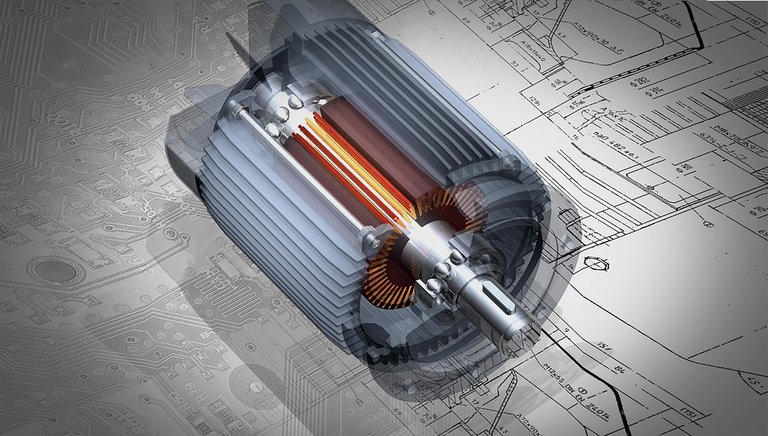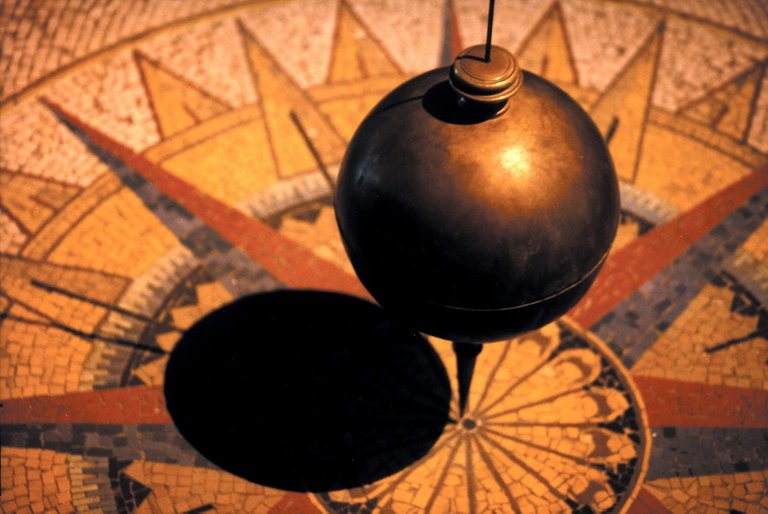- History of style
Aristotle and his followers believed that the natural state of objects on earth did not move and that objects were inclined toward such a state if left alone. Aristotle distinguishes between the innate tendencies of objects to find their "natural place" (eg heavy objects falling), leading to "natural motion", and unnatural or compulsive motion, requiring continuous application of force. Yet this theory, although based on everyday experience of how moving objects (eg horses and carts), have difficulty calculating calculations for projectiles, such as arrow flights. Several theories have been discussed over the centuries, and the idea of the middle of the end that the object in motion is forced to carry the innate thrust force is the influence of Galileo's work.
Galileo experimented in which rocks and cannon balls were both rolled on a steepness to prove the reverse of Aristotle's motion theory in the early 17th century. Galileo points out that objects are accelerated by gravity which do not gravitate their mass and argue that objects retain their velocity if not influenced by force - usually friction. Isaac Newton is known as the unambiguous argument for the first time, that in general, constant force causes the rate of constant change (time derivative) of momentum. Essentially, it gives the first mathematical definition and only the mathematical definition of the quantity of force itself - as the momentum derivative of time: F = dp / dt.
In 1784 Charles Coulomb discovered the inverse square law of interaction between electrical charges using a torsional equilibrium, which is the second fundamental force. The strong nuclear force and the weak nuclear force were discovered in the 20th century. With the development of quantum field theory and general relativity, it was realized that "force" is an exaggerated concept arising from conservation of momentum (momentum 4 in the relativity and momentum of virtual particles in quantum electrodynamics). Thus now known fundamental force is more accurately called "fundamental interaction".
- BIOMECHANICS
• According to Frankel and Nordin in 1980 :
Biomechanics is the science of engineering mechanics for the analysis of skeletal muscle systems. (Chaffin, 1991) generally defines biomechanics, namely: Biomechanics uses the concepts of physics and techniques to explain the movement of various parts of the body and forces acting on the part of the body on daily activities. Biomechanical studies can be seen in two perspectives, ie kinematics that lead to movement characteristics that is examining the movement in terms of space used in a temporary time without seeing the force that causes movement.
Kinematics study :
• describes the movement that causes how fast the object moves, how high it is or how far the object reaches the distance. The position, speed and acceleration are kinematic studies.
Kinetics study :
• describes the forces acting on one system, such as the human body. The study of kinetic movements explains the forces that cause movement. Compared to kinematics studies, kinetic studies are harder to observe, in which kinetic studies are seen as the result of force.
Thus, Biomechanics is a disciplinary source of science that integrates the factors that influence human movement, drawn from basic knowledge of physics, mathematics, chemistry, physiology, anatomy and engineering concepts to analyze the forces that occur in the body.
Newton's Law
The fundamental relationship to classical mechanics is embodied in the law of motion proposed by Isaac Newton, a British scientist.
There are 3 basic laws of biomechanics, namely :
Newton's Law I
"An object continues to be in its original state of being silent or moving at a constant speed unless it is affected by an unbalanced force, or a net outward force".
In simple terms Newton's Law I says that the zero-sum acceleration if the total force (resultant force) acting on an object is zero.
Mathematically writable:
F neto = 0
The still body will remain silent, and the moving body will keep moving at a constant speed, unless it is influenced by unbalanced forces.
Example I: If someone is on a walking bus and suddenly brakes, maybe that person can be bounced, but that is the inertia that causes the forward to continue even if the bus has been changed.
The impact injury is caused by the tendency of the human head to obey the law. If there is a jerking force from the back, the body will jerk fiercely forward as it comes into contact with its seat. But the head tends to not move and jerk in the extending position (extension). Because the head is attached to the body, then the head will bang hard forward causing damage to the cervical vertebra.
Example II: Injuries in boxing or football that result in brain damage occur in a similar process.
Newton's Law II
"If there is a force acting on an object then the object will adjust the acceleration in the same direction as the direction of force".
Newton I was used to measure an observation.
the acceleration of an object (a) is inversely proportional to its mass (m) and is proportional to the net force (F) acting on it.
Then the force relationship (F) and acceleration by Newton are formulated:
F = m. a
Type:
m: the mass of the object or the initial mass (m: 1 kg mass)
a: acceleration 1 mS-2
F: 1 kg mS-2 = 1 N
Experiment I :
Imagine you pushing an object with an F style on a slippery floor so that it moves with acceleration a. According to the experimental results, if the style is enlarged 2 times the acceleration becomes 2 times larger. Likewise if the force is enlarged 3 times the acceleration becomes 3 times larger.
Conclusion: that the acceleration is proportional to the resultant force that works.
Experiment II :
This time the mass of the object is varied but the style is kept the same. If the mass of the object is magnified twice, it turns out to be ½ times the acceleration. We can conclude that the acceleration of an object is inversely proportional to the mass of the object.
The mass is the intrinsic property of an object expressing its resistance to acceleration. The mass of an object can be compared with the mass of another object by using the same force on each object and by measuring its acceleration.
Thus the ratio of the mass of the objects is equal to the inverse of the acceleration ratio of the objects produced by the same force :
m = F / m
The mass of an object is independent of the location of the object.
Example :
A medical worker who has difficulty moving heavy trolleys may seek the help of his colleagues, to produce a larger force, so that the movement of the trolley from rest to move (acceleration) generates greater or easier to move trolleys.
Newton's Law III
Styles always happen in pairs. If it is A, working on a force on object B, the same force as opposite is done by object B on object A.
F action = F reaction
F action = force acting on the object
F reaction = reaction force of an object due to action force
The third law states that "no forces arise in this universe, without the existence of another style which is the same and contrary to that force".
If a force acts on an object (action) then it does the same force in opposite direction (reaction). In other words the style always appears in pairs. There is never a style that appears alone.
Example:
When walking, pounding feet or shoes to the floor surface usually means that the person is pressing his feet to the floor surface with the same earth reaction force through the floor on the foot.
Style Types:
1. Heavy Style
The weight of an object is the gravitational pull between the object and the earth. This force is proportional to the mass of the object and the gravitational field which is also equal to the acceleration of free fall gravity:
The object's intrinsic property weight. Weight depends on the location of the object, because g depends on the location. Styles are always perpendicular to the bottom of any place where the position is placed, whether in the horizontal, vertical or inclined plane.
2. Normal Styles
The normal style is the force acting on the touch plane between two touching surfaces and the direction is always perpendicular to the touch plane.
3. Friction Style
"When two objects are in touch, they can work together on frictional forces."
Friction forces are parallel to the surface of objects at the point of contact.
Friction style (friction) is very important in daily life, especially the body.
One of the most important functions of the pericardial sac enclosing the heart :
• to accommodate pericardial fluid that keeps the membrane separate and does not rub against each other due to friction derived from the heartbeat.
• Synovial fluid reduces friction by acting as a lubricant or friction-lowering between cartilage-coated ends of bone in synovial joints, eg knee joints.
STYLE-STYLE ON HUMAN BODY
Style is the pull or drive that causes the change of an object.
Style can also be defined, that anything that can cause a mass object to accelerate.
Movement in the body occurs because of the force that works. There are styles that work on the body and the forces that work in the body.
• Style on the body
For example: body weight style.
• Style in the body
often unconscious, for example: Heart muscle style, lung muscle style.
Style on the body there are 2 types:
- The force on the body in a static state
- Style on the body in a dynamic state
1. Body Style In Static Condition
The forces applied to the mechanical engine rods are always multiplied by machine operation. Means that force resides in the specific operational domains of time domain.
"If force over a given time domain can (magnitude) and direction vector remain constant is a static force"
Static styles occur indeed the burden of being charged the magnitude remains all the time. In this case the mass is constant, and the acceleration is an acceleration gradient with time. For static conditions means silence or speed Zero (0).
Static:
The body is in equilibrium, the amount of force and the moment of force present is zero.
There are 3 classes of lever system:
a. First class
The point of support lies between gravity and muscle
Example: head and neck
b. Second class
The force between the fulcrum and the muscle force.
Example: heels on tiptoe
c. Third class
The muscle force lies between the point of support and gravity.
Example: arm muscle
2. Style In The Body In A Dynamic State
"When the large force or direction of its vector changes with time are dynamic forces".
The force in the body in a dynamic state is the ability to maintain equilibrium when moving. For a constant price, then the current end time domain style: force is the action or the agent that causes the mass object to move accelerated.
Equilibrium is a complex interaction of the integration / interaction of the sensory system (vestibular, visual, and somatosensoric including proprioceptor) and musculoskeletal (muscle, joints and other soft tissues) modified in the brain (motor control, sensory, basal ganglia, cerebellum, association area) in response to changes in internal and external conditions. Influenced by several other factors such as age, motivation, cognition, environment, fatigue, drug effects and previous experience.
thanks for reading, here are some of my previous post :
thanks for reading, here are some of my previous post :
https://steemit.com/steemstem/@najma/physics-in-the-body-with-health




